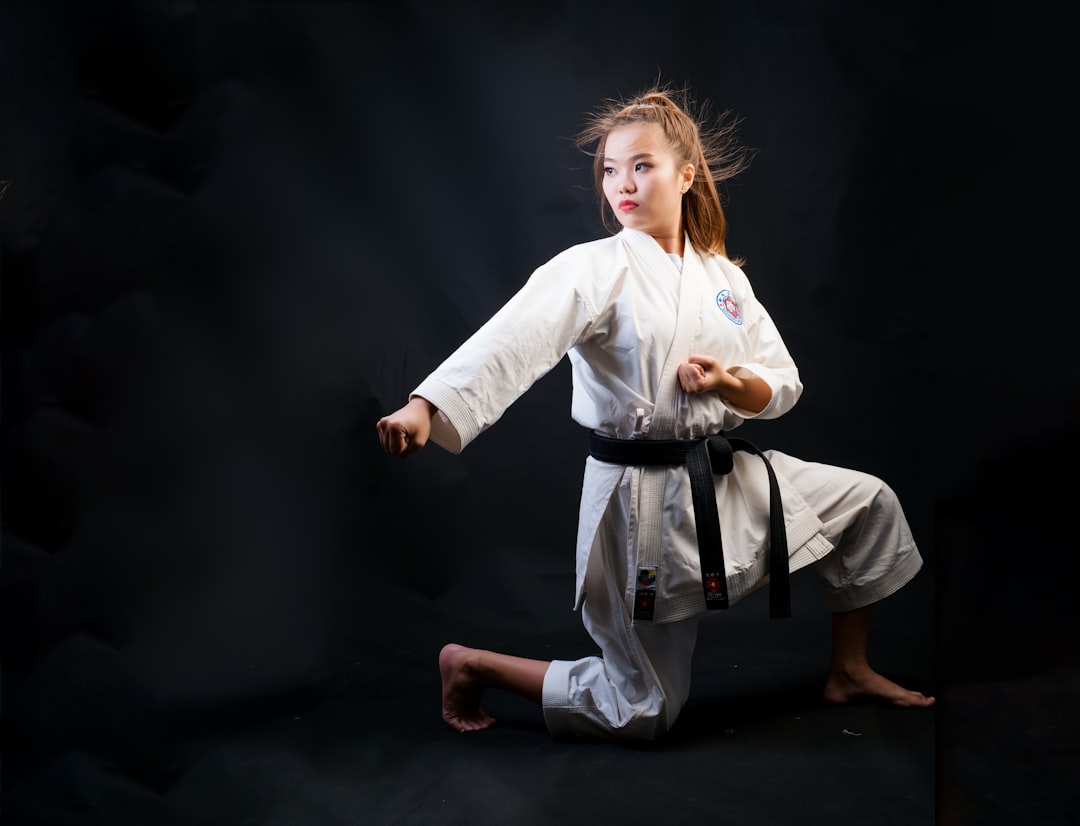The karate uniform, known as the keikogi, is a traditional and functional garment that has evolved over time while maintaining its cultural significance within the martial arts community. Originating in Japan and characterized by its white jacket and pants design, the keikogi supports the full range of movements inherent to karate practice, balancing durability with the need for mobility. Beyond traditional uses, the keikogi has become a staple across modern martial arts practices worldwide, serving as a visual indicator of a practitioner's progress and achievements, often adorned with patches representing their rank and accomplishments. The gi, or karate uniform, has a history that traces back to simple training attire in Okinawa, transforming into the keikogi under Japanese influence. Over time, the belt system within karate, initially a practical feature, came to symbolize skill levels, with white indicating novices and black representing expert practitioners. This dual role of the keikogi as both a functional uniform and a cultural emblem reflects the discipline's training and ethos, highlighting its enduring place in the evolution of karate.
Martial arts practitioners around the globe don attire that transcends mere clothing, symbolizing discipline, respect, and tradition. Known as ‘keikogi’ in judo or ‘karategi’ in karate, these uniforms are integral to the martial arts experience, serving as a blank canvas upon which skill and rank are visually conveyed through belts of varying colors. This article delves into the significance of the karate uniform and its evolution, offering insights into how these garments have shaped the identity of practitioners throughout history. Join us as we explore the essential role of martial arts attire in preserving the rich heritage and fostering the growth of this timeless practice.
- Understanding the Essentials: The Karate Uniform and Its Significance
- The Evolution of Martial Arts Attire: Historical Perspectives on Gi and Belt Use in Karate
Understanding the Essentials: The Karate Uniform and Its Significance

When delving into the realm of martial arts, one encounters a myriad of uniforms, each with its own significance and purpose. Among these, the karate uniform, known as a “keikogi” in Japanese, stands out for its functional design and cultural importance. A keikogi is a white jacket and pants combination that provides both flexibility and modesty during practice and competition. It is crafted from cotton or a cotton-blend fabric to ensure durability while allowing for ease of movement, which is crucial for the various kata and kumite sequences performed in karate. The uniform’s simplicity and universality make it an essential component of traditional karate training. Is the keikogi used only in traditional forms of karate, or does it have a place in modern practice? The keikogi is indeed versatile and remains integral to both traditional and contemporary karate practices worldwide. It serves as a canvas for belts and patches that denote the wearer’s rank and achievements, further emphasizing its significance as a symbol of discipline, respect, and progress within the martial art.
The Evolution of Martial Arts Attire: Historical Perspectives on Gi and Belt Use in Karate

Throughout history, the martial arts uniform, commonly referred to as a “gi” in karate, has undergone significant transformations. Initially, practitioners trained in loincloths or lightly padded garments that allowed for ease of movement and did not hinder their techniques. Over time, as the practice of karate evolved from its Okinawan roots to become a global discipline, the gi became more standardized in its design and function. The karate uniform name itself is derived from the Japanese word “keikogi,” meaning training clothes, which reflects its origins influenced by Japanese martial arts. The gi serves not only as training attire but also as a symbol of respect for the discipline and its traditions.
The belt system within karate, another integral aspect of the uniform, initially had no specific color coding; belts were simply used to tie the pants up and secure them during practice. It wasn’t until the 20th century that colored belts began to signify rank and skill level. White belts indicated beginners, while black belts symbolized the highest level of proficiency, a convention that has been widely adopted and understood in karate worldwide. The evolution of the belt system from functional necessity to an honorific representation of progress in martial arts is a testament to how martial arts attire not only adapts to serve the practical needs of training but also encapsulates the cultural and disciplinary ethos of karate practice.
In conclusion, the martial arts uniform commonly known as a “gi” serves as more than mere attire for practitioners of karate; it is a symbol of tradition and discipline. Exploring the karate uniform’s name and significance reveals its historical roots and evolution, which have shaped the practice and culture of karate. Whether on the dojo floor or in competition arenas, the gi and belt system remain integral to martial artists’ journeys, reflecting their progress and dedication. Understanding the essential role these uniforms play in the discipline of karate enriches one’s appreciation for the art form and its deep-seated customs.
